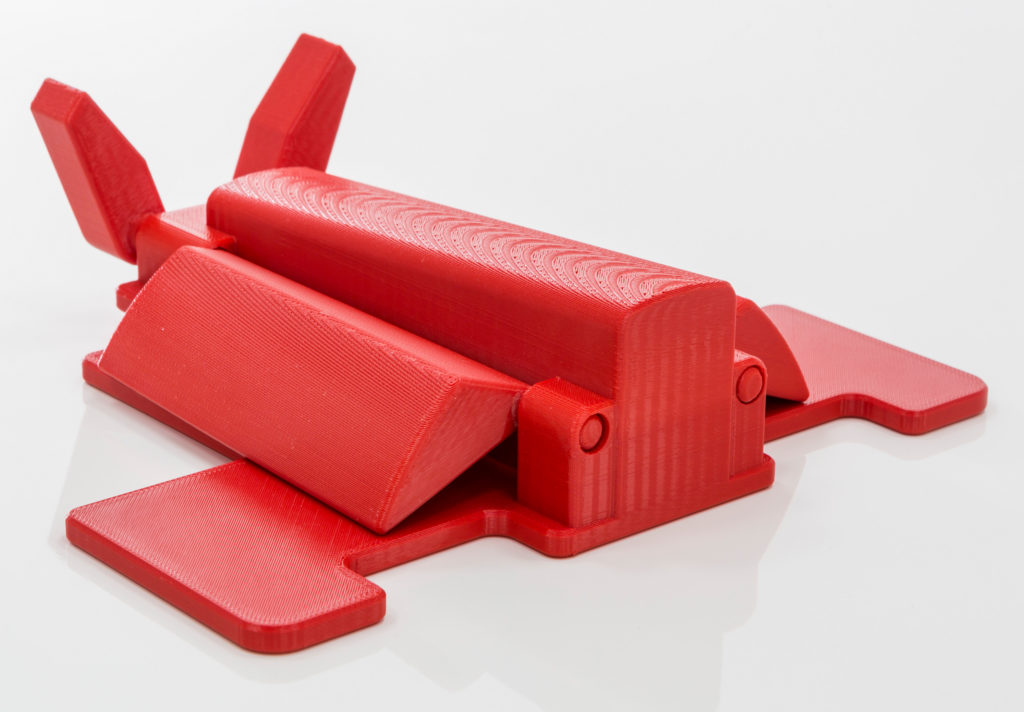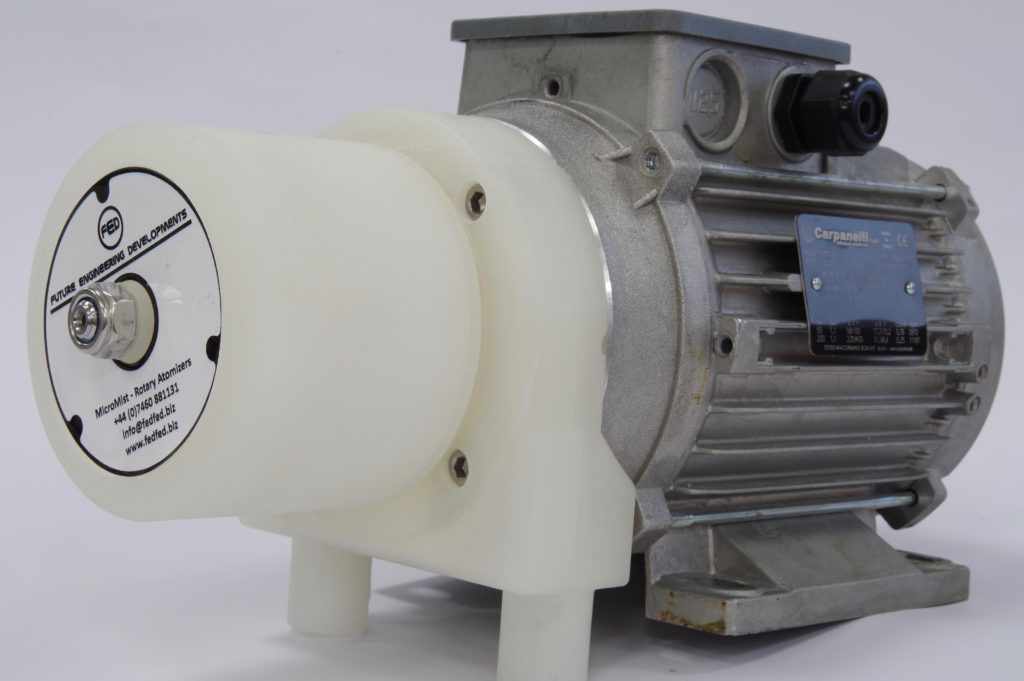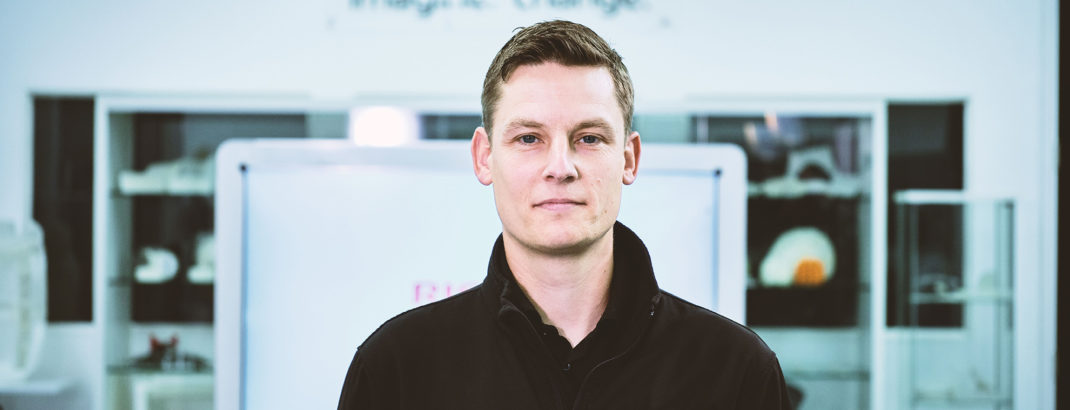Additive manufacturing (AM) has the power to revolutionise both the product development cycle and full end-to-end manufacturing process, resulting in optimised designs, vastly improved lead times and supercharged productivity.
That’s the message from Rich Minifie, Ricoh 3D’s Senior Additive Manufacturing Engineer.
Rich said AM gives engineers and product designers the opportunity to rethink the design stage of a product, smashing through the limitations of traditional manufacturing processes.
“AM allows designers the freedom to imagine more creative concepts that can only be realised through this technology,” he said.
“Consolidating parts, minimising manual assembly and simplifying or optimising design – that is the true power of AM.”
Experts at Ricoh have reworked and revamped several products by switching their manufacturing method from traditional to AM. Nowhere is this more evident than in Ricoh’s own operations and production processes associated to their core commercial printer business.
Something as simple as printing on envelopes presents industry-wide challenges in productivity, as it normally means small batches of envelopes are required to be frequently reloaded into the printer paper tray by hand. To address this, the in-house Solutions department at Ricoh designed a dynamic feeding aid manufactured from CNC aluminium and pressed metal parts, combined with standard components which had to be manually assembled.
The Dynamic Feeding Aid improved productivity by 80 per cent by enabling the paper feed to be filled with envelopes. However, the manufacturing process of the new device meant that the lead time of the component was up to six weeks, with a minimum order quantity (MOQ) of 10 units.

With an average of one order per month for the feeding aid, the MOQ was a frustration and the team had to hold stock of the parts in order to meet demand and avoid costly delays to the end customer.
Rich said: “We could see that the Dynamic Feeding Aid was useful and had potential, but it cost £470 and the lead time was too long.
“It was obvious that the product lent itself perfectly to 3D printing.
“Sometimes, if engineers have used traditional manufacturing methods their whole careers, it is difficult for them to think of solutions outside of that context. That’s not the case for people who have worked with AM from the off. Those barriers aren’t there.”
The Ricoh team was able to skilfully consolidate parts to eliminate the requirement for assembly and additional fixing components.
As a result, the product lead time was reduced from weeks to just one day. The product can now simply be produced on demand – with no need to hold any stock – in just nine hours.
The price of the solution was also reduced to £84, whilst consolidating 36 parts into just three.
Rich continued: “The Dynamic Feeding Aid is a small, but mighty example of how AM can streamline processes for businesses – including our own!.
“From using 3D technology for part assembly, metal replacement and function integration in our production printers; to components for inkjet innovations in the volume wallpaper production market; to jigs and fixtures in our toner bottling plants – there are transformative examples across the business of how we’re using our own AM services to eliminate manual assemblies, reduce stock levels and streamline the supply chain. This gives us first-hand insight to bring to our customers”
Rich stressed that, contrary to common misconception, 3D printing is about much more than just prototyping, with the right manufacturing partner.
“During the design cycle, a prototype is required for visual acceptance, to test for fit and assembly, or for test simulations,” he said.
“This historically – and I’m talking as recently as five years ago – would be the only time within a project where you would consider additive manufacturing, in order to produce parts quickly and ensure errors in expensive tooling are not made.
“Today, however, things are very different. With recent technology and material developments, additive manufacturing is now more than ever being recognised as a serious manufacturing tool for end-use parts.”
While 3D printing undoubtedly offers greater design flexibility, it is not quite a case of the design rulebook being thrown out of the window yet.
He said: “There are Design For Manufacture (DFM) guidelines for additive manufacturing, known as DFAM, but due to the newness and variety of additive technologies and systems available on the market these are still very much evolving.
“Now the considerations vary by what can be achieved on each individual system in terms of the minimum feature sizes and strength of different materials, due to the anisotropic properties of 3D printed parts.
“Another key factor when designing for AM is to ensure warping due to wall thickness is avoided at all costs.”
One of the trademarks of the technology is the ability to manufacture parts within parts. Ricoh 3D works with The Robert Jones and Agnes Hunt Orthopaedic Hospital in Oswestry which improves patient rehabilitation through an orthotic lever produced by printing the ball joint feature in situ. This removes the need for a costly assembly process.
Similarly, the geometry on the MicroMist™ Rotary Atomizer range, which suppresses dust in industrial environments, could not be manufactured as one single piece with any manufacturing technique other than 3D printing.

Certain sectors have already embraced the potential of additive manufacturing. It’s widely used in F1, for example, where development cycles are being shortened to days and design modifications implemented between races to gain a competitive edge.
The same can be said of aerospace, where weight is vitally important – it costs over £15,000 for every kilogram put into space. The technology is also revolutionising the medical sphere, where prosthetics can be made bespoke to the patient, and is widely adopted across architecture for modelling.
But, those trailblazers aside, there are great swathes of businesses which are turning a blind eye to the technology.
“It’s time for designers and manufacturers to switch on the power of AM for their processes and production,” concluded Rich.



